Do you want to make sure you’re riding your bike safely? One of the most important things to consider when choosing a bicycle helmet is what type of cycling do you plan on doing? Are you an occasional off-road mountain biker, or a more experienced road rider? Depending on your needs, there are distinct differences between gravel bike helmets and road bike helmets. Gravel biking typically takes place on rougher off-road terrain than regular road biking so it requires specialized equipment designed for specific activities.
In this post, we’ll take a closer look at the advantages that each style offers, from the unique features they provide to their overall safety ratings – helping guide you in selecting the right helmet for your ride!
Table of Contents
What Types of Bike Riding Are Existing?
There are several types of bike riding that can be enjoyed. Some are more intense than others, and some require more skill than others.
- Road biking is a popular form of cycling in which riders use road bikes to traverse paved roads and highways. Road bikes have lightweight frames and smooth tires designed for speed. They are built for long-distance rides over flat terrain, and many professional cyclists prefer this type of bike for racing or training purposes.
- Mountain biking is another popular form of cycling that requires specialized bicycles equipped with sturdy frames, wide tires, and powerful brakes. Riders usually ride off-road trails on mountains or hillsides while tackling steep descents, tight turns, rocky surfaces, and other obstacles along the way. [1]
- Cyclocross is a type of cycling that combines elements of both road and mountain biking, typically on mixed terrain courses. The sport is very popular in Europe and riders use special bikes designed for the purpose, which have large knobby tires and reduced gearing for increased maneuverability in tight turns.
- BMX (Bicycle Motocross) is a form of racing where riders perform stunts on specially built tracks featuring jumps and other obstacles. Riders usually use BMX bikes with small frames, wide handlebars, and single-speed gearing. This type of riding requires excellent balance and agility as well as acute bike handling skills.
- Commuter cycling is a type of recreational cycling used to travel between destinations. Riders typically use hybrid or comfort bikes for this purpose, which have features such as wide tires, upright handlebars, and comfortable saddles designed for long-distance rides. [2]
Finally, leisure cycling is a form of cycling that is simply done for fun and recreation. A wide variety of bike styles can be used for this purpose including road bikes, mountain bikes, folding bikes, electric bikes, and cruiser bicycles. Ride length and terrain will usually depend on the rider’s preferences and skill level. Whatever type of riding you choose, make sure to wear proper safety equipment like helmets and always follow traffic laws!
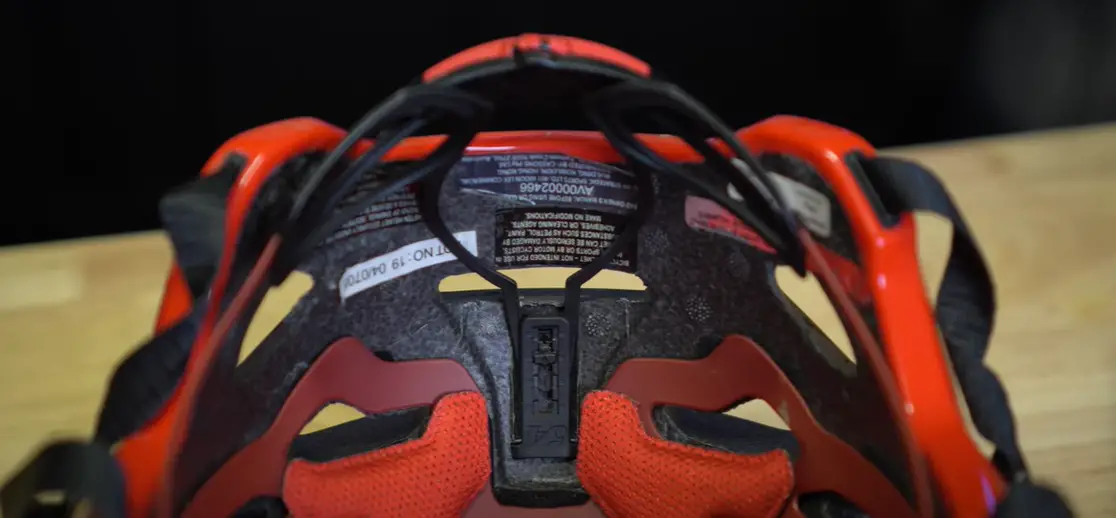
Why Is It Essential to Wear a Helmet When Riding?
Wearing a helmet when riding a bicycle, motorcycle, or any other vehicle is an essential safety precaution. Helmets protect your head from serious injuries in the event of an accident or collision. They also help to reduce the risk of death and severe brain injury if you are involved in a crash. Without wearing a helmet, riders are three times more likely to suffer a traumatic brain injury.
It’s also crucial to make sure your helmet fits correctly. An ill-fitting helmet can be worse than not wearing one at all, as it won’t properly protect your head in the event of an accident. Make sure that the helmet is snug but comfortable, and that it covers your entire head from front to back with no gaps between the straps or the side flaps. You may need to adjust the straps for a proper fit or purchase a larger size if necessary. [3]
By taking these simple precautions, you can help keep yourself safe while on the roads and trails.
Key Features and Functionalities of Gravel Bike Helmets
When riding off-road, gravel bike helmets are designed to offer the highest level of protection and safety. They feature a slim design that fits securely on the head, providing an aerodynamic advantage. The adjustable visor helps protect your eyes from the sun, mud, and debris when you’re riding in rugged terrain.
The helmet’s internal padding is designed for superior breathability and comfort as you tackle even the toughest trails. The hard shell offers superior coverage so that you can be confident in your safety whenever you’re out exploring nature.
With these helmets, you also get additional adjustable straps for a secure fit and removable pads for easy cleaning. An integrated bug net keeps pesky insects away when you’re out enjoying the outdoors. Many of these helmets are also equipped with a built-in LED for added visibility when riding at night.
If you’re an avid adventurer, then these bike helmets could be perfect for you. They provide superior protection and comfort so that you can focus on your ride instead of worrying about safety. With its aerodynamic design and adjustable visor, these helmets will help you make the most of your rides. [4]

Key Features and Functionalities Road Bike Helmets
When it comes to safety and comfort, a road bike helmet is an essential item. They come with key features and functionalities that make them suitable for riding in harsh conditions while providing protection and comfort.
A good helmet should always have ventilation to help keep your head cool on long rides. Ventilation ports are strategically placed throughout the helmet and allow air to move across your head, helping you stay cool on hot days or when climbing steep grades.
Additionally, such helmets should also have an adjustable visor to help protect your eyes from sun and wind. A good visor should be able to flip up or down depending on conditions, while providing plenty of coverage for your eyes when flipped down. The ability to easily customize the angle of the visor makes it easy to change how much light is entering your eyes at any given time.
Finally, many high-end road bike helmets come with a built-in MIPS system that helps reduce rotational force in the event of an accident. This technology works by utilizing special layers of foam and plastic inside the helmet that are designed to rotate independently of the head, helping to protect your brain from trauma in the event of an impact. [5]
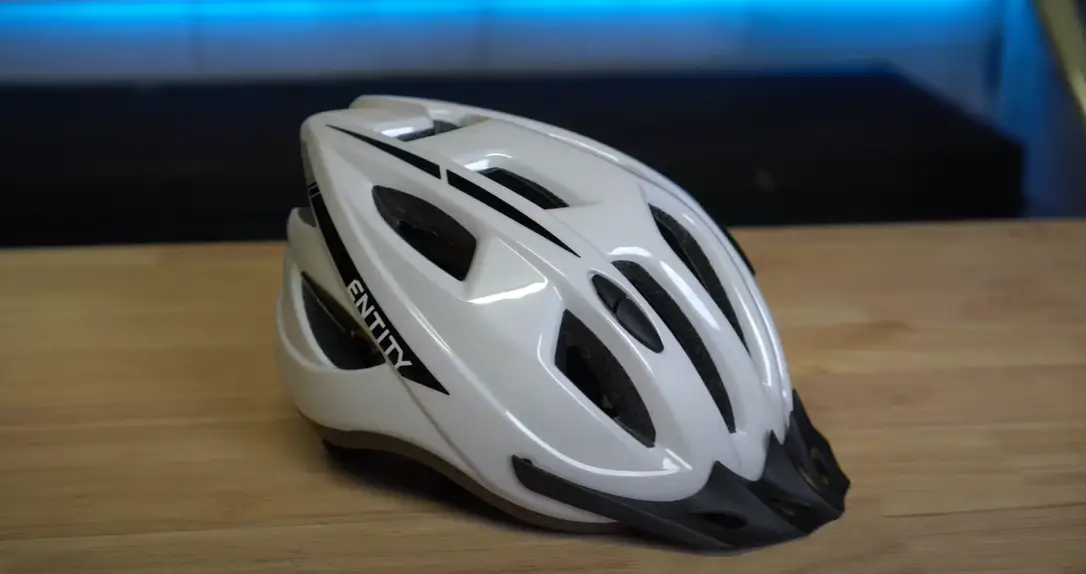
Structural Differences Between Road And Mountain Bike Helmets
Mountain bike helmets are designed differently from road helmets and cater to specific riding styles. Road helmets tend to be lighter and more aerodynamic than mountain bike helmets, which helps riders move faster and with greater efficiency. The ventilation on road helmets is also usually better than that of mountain bike helmets, as air flow is important at higher speeds.
In contrast, mountain bike helmets tend to be heavier and more durable than road helmets due to the increased risk of a crash in off-road conditions. They also have more coverage around the head compared to road models, providing additional protection should you fall. Mountain bike helmet shells are usually made from polycarbonate or ABS plastic so they can withstand impacts from sharp objects such as rocks or branches. Additionally, mountain bike helmets often come with a visor to protect the eyes from debris and direct sunlight.
Overall, road and mountain bike helmets may look similar but they are designed for different riding styles and offer different levels of protection. It is important to choose a helmet that best suits your needs and comfort level. [6]
What to Keep in Mind When Choosing a Bike Helmet?
When choosing a bike helmet, it’s important to keep the following things in mind:
- Safety Standards – Make sure that the helmet meets safety standards set by your country or region. This is to ensure that you have adequate protection when cycling.
- Fit – A good fitting helmet should be snug on your head but not too tight. The straps need to fit comfortably and securely under your chin so that it won’t move around when riding.
- Ventilation – The number of vents on a bike helmet can help reduce fogging while also keeping your head cool during long rides. Look for helmets with larger vents as they will provide more air circulation and ventilation for your head and face area.
- Visibility – If you’re riding in low light conditions, look for a helmet that has reflectors or bright colors to improve your visibility to other drivers on the road. This can help reduce the risk of accidents.
- Comfort – Some bike helmets may be lightweight and offer great protection, but if they don’t feel comfortable on your head then they won’t do you any good. Look for adjustable straps and removable padding so that you can customize the fit and feel of your helmet.
- Helmet Weight – A heavy helmet can be cumbersome while you’re riding, so look for models that are lightweight and aerodynamic. The lighter the helmet, the easier it will be to wear for extended periods of time.
- Price – Although it is important to find a safe and comfortable bike helmet, don’t forget to consider your budget when making a purchase. There are many great helmets available at different price points that offer top-notch safety features and comfort.
- Durability – When you are investing in a bike helmet, make sure to look for one that is made with quality materials and construction. This will ensure that your helmet will last for many years of riding. [7]
By keeping all the factors listed above in mind when choosing a bike helmet, you can be sure that you have selected the perfect helmet for your needs. Safety, fit, ventilation, visibility, comfort, weight and price should all be taken into consideration to ensure you get the best protection possible while out on the road.
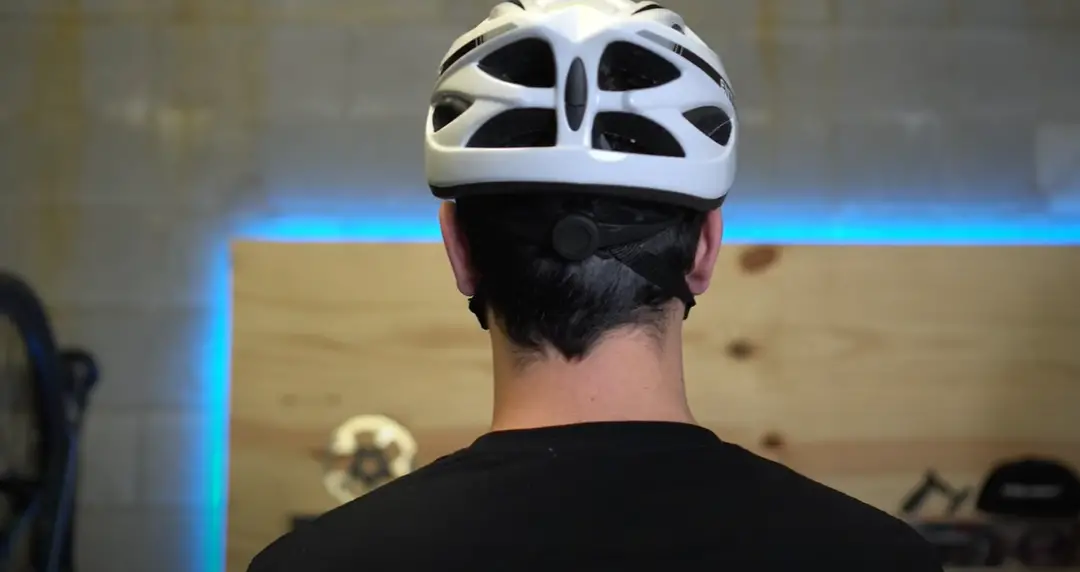
How to Adjust a Bike Helmet?
- Put the helmet on your head and adjust the chinstrap. Make sure it’s snug, but not too tight, so that one or two fingers can fit between your chin and the strap.
- Move the side straps and back strap up or down to make sure they’re in a comfortable position, close to your ears and below your jaw line. It should feel like a secure hug around your head.
- Adjust the back strap until it forms a “V” shape under each ear lobe when you look at it from the front of your face.
- Tighten the dial in the back of most helmets to ensure proper fit for head circumference. Many helmets have an adjustable ring that you can turn to tighten the fit.
- Check the position of your helmet by shaking your head from side to side and making sure it doesn’t move around too much or slip off your head.
- Re-adjust if necessary until the helmet fits securely and comfortably on your head. [8]
Once you have properly adjusted your bike helmet, wear it every time you ride a bicycle for added protection.
Steps for Head Measurement for a Perfect Bike Helmet Fitting.
- Measure your head circumference: Use a soft tape measure, such as those used for dressmaking or tailoring, to encircle your head in a horizontal line just above your eyebrows and ears. Make sure the tape is not too tight, as an inaccurate measurement could lead to discomfort when wearing the helmet. Record the circumference reading in centimeters or inches and use this figure to find the corresponding helmet size from manufacturers’ sizing charts.
- Measure length of forehead: Using the same soft tape measure, measure from mid-point on the hairline at front of forehead where the brim of a hat would sit across to just above each ear – this should be approximately 5 cm (2 inches) above each ear.
- Measure the widest part of your head: This measurement should be taken from temple to temple, passing over the crown of the head and across the forehead just above the eyebrows.
- Final step: Take all three measurements into account when selecting a helmet size – some manufacturers may recommend taking more than one measurement for best results; take their advice as everyone’s head shape is different. If buying online, always refer to the manufacturer’s sizing chart before making a purchase as sizes can vary between brands and models. [9]

How to Take Care of a Bike Helmet?
Caring for your bike helmet is an important part of owning one. Proper care and maintenance will extend the life of your helmet and can help keep you safe in the event of a crash. Here are a few tips on how to take care of your bike helmet:
- Clean regularly – After every ride, wipe off any sweat or dust that has collected on the inside and outside of the helmet. You can use a damp cloth for this task, just be sure not to get it too wet as this could damage the foam padding and shell.
- Replace worn parts – Over time, parts such as the chinstrap and inner pads may need replacing if they become worn down or stretched out from regular use. Make sure to check these parts regularly and replace them when needed.
- Store in a safe place – When not in use, store your helmet somewhere cool and dry where it won’t be exposed to direct sunlight or extreme temperatures. Avoid storing your helmet on a shelf or in a garage as this can cause the foam padding and shell to degrade over time.
- Avoid impacts – Even if your helmet is made of strong materials, it can still be damaged from hard impacts. Do your best to avoid dropping or throwing your helmet as this could cause the shell and straps to become weakened. [10]
Following these simple steps will help keep your bike helmet in top condition for years to come.
FAQs
Can I use an MTB helmet for road cycling?
Yes, you can use an MTB helmet for road cycling. However, it is important to note that an MTB helmet may not provide the same protection as a dedicated road cycling helmet. An MTB helmet is designed primarily for off-road and trail riding and may not provide adequate ventilation or coverage in the areas most commonly impacted during a fall from a bicycle on paved roads. Additionally, many full-face helmets are not legal for use on public roads and trails. For maximum safety while riding on paved roads, we recommend using a certified and approved road cycling helmet.
Is there a difference between bike helmets?
Yes, there are many differences between bike helmets. The type of helmet you need depends on the type of biking you’ll be doing. Mountain bike helmets tend to have more ventilation than road bike helmets and often include visors to protect riders from sun, rain, and debris. Road bike helmets are sleeker and more aerodynamic than mountain bike helmets, but may not provide as much protection in a crash. Commuter and hybrid bike helmets usually have less vents and offer more coverage around the back of the head for increased safety when riding in traffic or around town. Additionally, some helmets will have additional features such as magnetic buckles that make for easier fastening/unfastening or integrated lights that can make your ride safer at night.
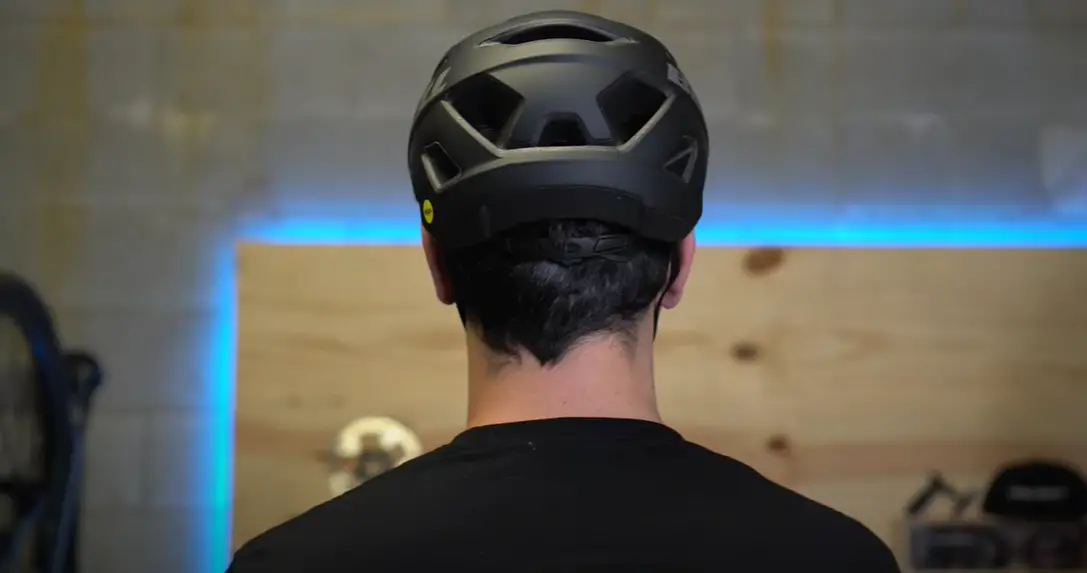
What is the difference between a normal helmet and an off road helmet?
The primary difference between a normal helmet and an off road helmet is the safety features. Normal helmets generally provide basic protection from impacts, whereas off road helmets are designed to provide additional protection from debris and other hazards encountered on rough terrain. Off-road helmets typically feature additional padding for comfort, as well as more aggressive styling that provides better visibility of the rider’s face and neck area. Additionally, off road helmets often include a visor or peak which helps keep dust and bugs out of the rider’s eyes while riding.
Do expensive helmets make a difference?
Yes, expensive helmets can make a difference. Expensive helmets are often made with higher quality materials and provide better protection from impacts and head injuries. Some of these features can include things like energy-absorbing foam liners, adjustable fit systems, better ventilation, and more. All of these features work together to help you stay comfortable while providing superior protection when you’re out on the road or trail. Additionally, many high-end helmets come with additional safety certifications.
Useful Video: What Type Of Bike Helmet Should You Buy?
Conclusion
As cycling continues to gain popularity, it is important to remember the safety considerations that come with it. Helmets provide a protective layer between your head and anything you might encounter while riding. Going beyond just one helmet, familiarizing yourself with the types of helmets best suited for specific landscapes and terrains can make all the difference in an accident situation. There are several good quality, well-made helmets on the market for every kind of rider — whether you’re tackling mountain trails or easing through park pavement. With cycling being so enjoyable and accessible, we encourage everyone to remain safe by always wearing a helmet no matter where your wheeled adventures take you! Let’s put safety first when pedaling forward, and spread the word about how easily it can be done with a friendly reminder here or there.
References:
- https://lemonbin.com/types-of-bicycles/
- https://www.bicycling.com/bikes-gear/a23067076/types-of-bikes/
- https://www.sbigeneral.in/blog-details/importance-of-wearing-a-helmet
- https://helmethacks.com/best-gravel-bike-helmet/
- https://www.tredz.co.uk/help-advice/guides-reviews/buyers-guides/clothing/accessories/road-helmets
- https://multisportmojo.com/difference-between-road-and-mountain-bike-helmets/
- https://www.rei.com/learn/expert-advice/bicycle-helmet.html
- https://road.cc/content/feature/how-set-your-helmet-10-easy-steps-perfect-fit-171677
- https://helmethacks.com/how-to-measure-your-head-for-a-bike-helmet/
- https://www.realsimple.com/health/preventative-health/safety/bike-helmet-safety


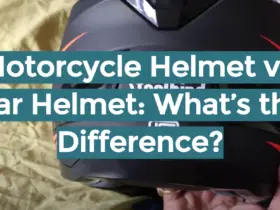
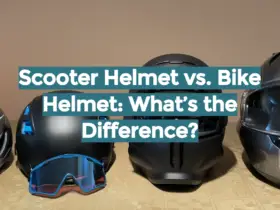

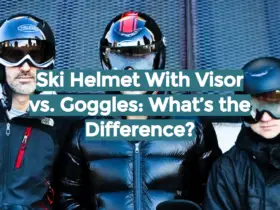
Leave a Reply